Congress was reluctant, but President Thomas Jefferson was worried about war with France, and so in 1802 the fledgling United States of America established an academy for training youth in the disciplines of a military life and the arts of war. This was, of course, the U. S. Military Academy at West Point, New York. If there is a rock in the American character that can be looked to in times of adversity, this is it. Not without its turmoils or controversies, West Point nonetheless has been the training ground of the nation’s military leaders, indeed some of the country’s best leaders in general.
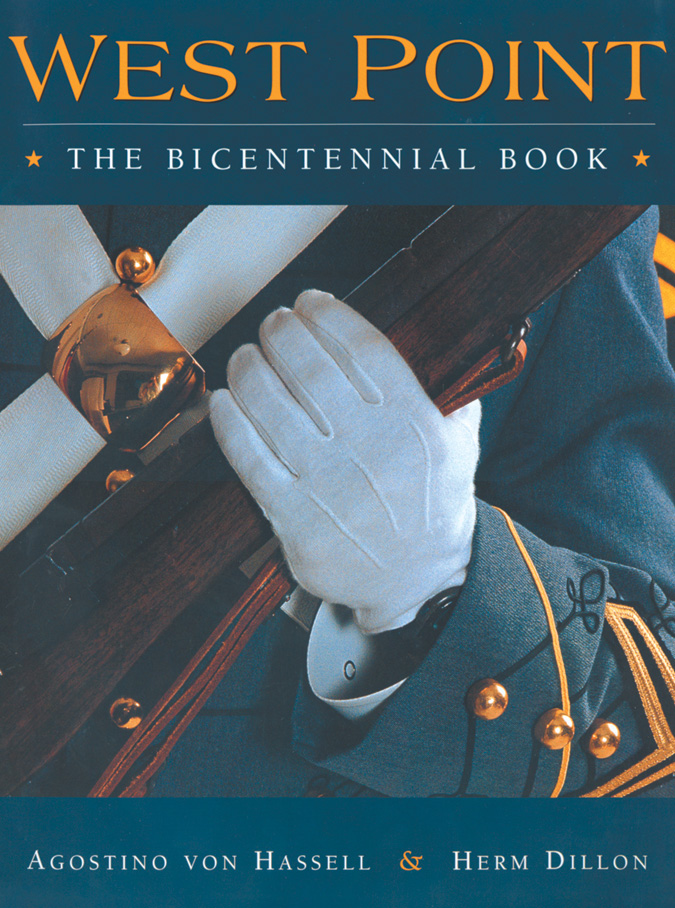 No good anniversary goes unheralded without a good coffee table book, and West Point: The Bicentennial Book (by Agostino von Hassell and Herm Dillon, Howell Press, Charlottesville, Va., 2002, 255 pp., illustrations, bibliography, $60.00 hardcover) commemorates West Point’s 200 years of educating the nation’s young warriors. Photographer Agostino von Hassell and writer Herm Dillon received exceptional access to West Point’s cadets and community. The result is a 9-by-12-inch book of explanatory text and tasteful color photographs.
No good anniversary goes unheralded without a good coffee table book, and West Point: The Bicentennial Book (by Agostino von Hassell and Herm Dillon, Howell Press, Charlottesville, Va., 2002, 255 pp., illustrations, bibliography, $60.00 hardcover) commemorates West Point’s 200 years of educating the nation’s young warriors. Photographer Agostino von Hassell and writer Herm Dillon received exceptional access to West Point’s cadets and community. The result is a 9-by-12-inch book of explanatory text and tasteful color photographs.
Von Hassell and Dillon primarily examine the West Point of today. This is not the historical tome issued in conjunction with the PBS Television series about West Point. There is, of course, the requisite chapter on the founding and early decades of West Point, but the tone is set even earlier in the book’s Introduction by Class of 1965 member and Medal of Honor awardee Paul Bucha. He reflects on the West Point experience and what it instills in those who endure its rigors. The remainder of the book echoes his sentiments.
Chapters focus on a plebe’s first day, the first summer of training (called Beast Barracks), upper-class life, athletics, the Cadet Mess Hall, religious life, uniforms, and the academy’s approach to training military leaders in an age that has long surrendered horseflesh and sabers for computers and lasers.
Von Hassell has lavished the book with images of the West Point of 2001, mainly on sunny days: the gray-jacketed formations on the marching grounds, the closets with uniforms aligned like soldiers on parade, the élan on the athletic fields, the challenges of field training, the mental focus of class work.
Improbably, the publisher has seen fit to list—by class from 1802 through 2001 inclusive—the names of every graduating cadet, hence the entire Long Gray Line, almost 60,000 in all and filling the last 75 of the book’s 255 pages. Also included is a three-page, prominently displayed annotated bibliography that includes at least one markedly negative volume on West Point.
The publisher likely sees this as a work mainly marketable to West Point graduates. However, the text seems to attempt to explain the West Point ethos to those who know little about it. Because that ethos is so strong and so selfless, it would do well for this book to find a much wider readership.
Brooke C. Stoddard
 Devil Dogs: Fighting Marines of World War I by George B. Clark, Presidio Press, Novato, Ca., 2000, 512 pp., photographs, maps, $24.95 quality softcover.
Devil Dogs: Fighting Marines of World War I by George B. Clark, Presidio Press, Novato, Ca., 2000, 512 pp., photographs, maps, $24.95 quality softcover.
By the autumn of 1918, the Allied armies had begun to advance steadily all along the Western Front. All save one were utterly wearied by four years of continuous slaughter and very close to the limit of their manpower resources, their under-strength ranks being filled with older men and young conscripts. The French, driven too far, had mutinied the previous year and the British, sickened by the bloodbaths of the Somme and Ypres Salient, had developed a deeply cynical attitude toward their leaders.
At last, however, victory seemed within their grasp and this spurred them to make one final decisive effort that would put an end to their collective misery. The exception was General John J. Pershing’s recently formed 1st U.S. Army. What made the Americans different was their physique and, above all, their enthusiasm. American columns, consisting entirely of healthy volunteers of prime military age, swung purposefully up to the front in a manner that had not been seen since the heady days of August 1914. And within the 1st U.S. Army was an anomaly of a unit: a U.S. Army division composed partly of soldiers and partly of U.S. Marines.
An AEF (American Expeditionary Force) division, the 2nd Division stood at 28,059 men, about twice the size of a French or British division. It was organized with, as its basic combat elements, four regiments formed into two brigades. The 1st Brigade comprised the U.S. Army’s historic 9th and 23rd Infantry Regiments, while the 2nd Brigade was formed from the U.S Marine Corps’ 5th and 6th Regiments.
As a further historic distinction, the “Marine Brigade” was commanded by the U.S. Army’s Brig. Gen. James G. Harbord in the Belleau Wood action. Afterwards the entire division was commanded by a Marine, U.S. Marine Corps Maj. Gen. John A. Lejeune, from late July 1918 until the end of the war and through the Occupation.
In a fascinating and well-researched book, military historian George B. Clark tells the complete, never-before-published story of the extraordinary contributions of the U.S. Marine combat service in World War I. Devil Dogs: Fighting Marines of World War I is the first book to examine the entire experience of the U.S. Marine Corps in France. Bolstered with information from original documents as well as personal memoirs both published and unpublished, the reader will follow the men who became U.S. Marines from their recruitment, training, and shipment overseas to the horrors of warfare and the quest to survive on the battlefield, known as the “killing zone,” where it was common for the wounded and gassed to be put back into the line of fire with minimal time for recovery.
Clark not only covers the Marines’ most famous battle of the war, Belleau Wood, in substantive detail, but also skillfully writes about the lesser-known though epic battles of Soissons, Blanc Mont, and the Meuse River campaigns. They are all here, including the critical and often overlooked engagements at Verdun, Marbache, and St. Mihiel.
Devil Dogs is a tremendous, superbly written book built on solid historical research and attention to detail. In the 80 years since the guns fell silent, very little has been written about the role of the U.S. Marines in World War I, but Clark’s fascinating and well-timed book is necessary for any serious student of World War I. His book will become the standard by which all other books will be judged on the role of the U.S. Marine Corps in the Great War. Semper Fidelis.
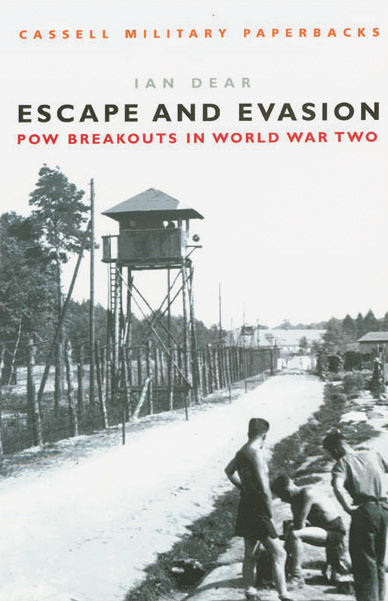 Escape and Evasion: POW Breakouts in World War II by Ian Dear, Sterling Publishing Inc., 2000, 192 pp., photographs, maps, $9.95 quality paperback.
Escape and Evasion: POW Breakouts in World War II by Ian Dear, Sterling Publishing Inc., 2000, 192 pp., photographs, maps, $9.95 quality paperback.
During World War II, Axis occupation policies, coupled with their brutal suppression of human rights, the large number of captured Allied POWs (7 million by 1945), and the Axis forced labor programs (300,000 people in 1939 and 7.5 million by September 1944), led to large numbers of men trying to flee Axis-held territory.
E & E personnel were assisted by individuals, their friends, families, and later by organized escape lines. Eventually, various governments sponsored these networks because some of the E & E personnel (both civilian and military) in Occupied Europe were considered critical war assets. The demands of the Allied air campaign, for example, increased daily. Trained aircrews needed significant reinforcements, especially when the losses increased between 1942 and 1945. (During these years Allied air forces lost more than 143,000 aircrew members.) Technical changes and the introduction of new aircraft and equipment meant continual retraining for aircrews. Successfully returning E & E aircrews didn’t have to be trained in the basics of airmanship, only on improvements, thus there was a substantial savings in both money and time.
On the Continent, the first unofficial E & E organizations were formed by small groups of patriots of all ages and walks of life, without money or outside aid. These groups conducted parties of Allied soldiers and airmen through occupied areas and eventually to neutral territory. The number of unofficial E & E organizations multiplied and continued to expand, and soon were supported by the Allies and the various governments-in-exile. Eventually, both official and unofficial escape lines formed tentacle-like outstations that kept watch for E & E personnel, escorted and transported them to safe houses, and equipped them with forged papers, disguises, and local clothing. They then moved these people along to other safe houses in the network, which covered a good portion of Occupied Europe.
Some of the more famous lines were the Pat O’Leary Line based in Marseilles, the Comet Line in Brussels, and the Trix Line in Holland. Not all E & E networks were strictly land routes. The Shelburne Line, among others, employed fast patrol boats, assault craft, fishing boats, and submarines to retrieve E & E personnel from the regions along the Brittany and Mediterranean coastlines. Operation PEGASUS I employed small assault boats to rescue 138 Allied men from the vicinity of Arnhem. Others were extracted via Lysander flying boats.
The escape networks and E & E personnel had to deal with a wide range of problems including language, penalties for aiding escapees, mass reprisals against civilians, scarcity of foodstuffs and other consumer goods, lack of clothing, lack of transportation, bombing destruction, constantly policed checkpoints and roving patrols, necessary official forms and passes, inquisitive local citizens, Axis security forces, lack of coordination and cooperation, lack of trained security screening personnel and procedures, and collaborators.
But the entire E & E effort provided Allied forces with proven methods to facilitate escapes by POWs and other Allied personnel. It also forced the Axis to employ manpower in rear-area duties. On June 3, 1943, a mass escape by 65 Allied POWs caused more than 50,000 Axis soldiers, police, and home guards to spend up to two weeks rounding up the escapees. The total number of individuals who attempted E & E in Europe is unknown, but it is believed to exceed 200,000. Successful escapes by civilians and military personnel possibly number 85,000, with 30,000 reaching Spain, 50,000 Sweden, and 5,000 the Soviet Union. Perhaps 120,000 attempted escapes failed.
Among Allied military personnel, 26,923 successful escapes were made (4,477 officers and 22,446 enlisted). German and Italian POWs also made numerous escape attempts, but they were sent to America for internment, which made escape and return to Europe nearly impossible. The fairly humane treatment Axis POWs received from their Allied captors also reduced much of the incentive to escape. Quite often they were fed better as POWs than by their own armies.
The E & E operations and their results led to the development of specialized equipment, such as escape kits, flexible hacksaws, silk maps, compasses, and beacon transmitters. The World War II experience also resulted in the search-and-rescue operational methods used in modern combat.
Overall, E & E operations provided the Allies with significant intelligence information, higher morale, and vital manpower resources. But the cost to the operators of the E & E networks remains unknown. One source suggests that for every successful escapee reaching neutral territory, one French, Belgian, or Dutch helper lost his or her life. Escape and Evasion: POW Breakouts in World War II makes a real contribution to the literature on POWs during World War II. Dear’s clarity of presentation and depth of scholarship clearly shine through in this book.
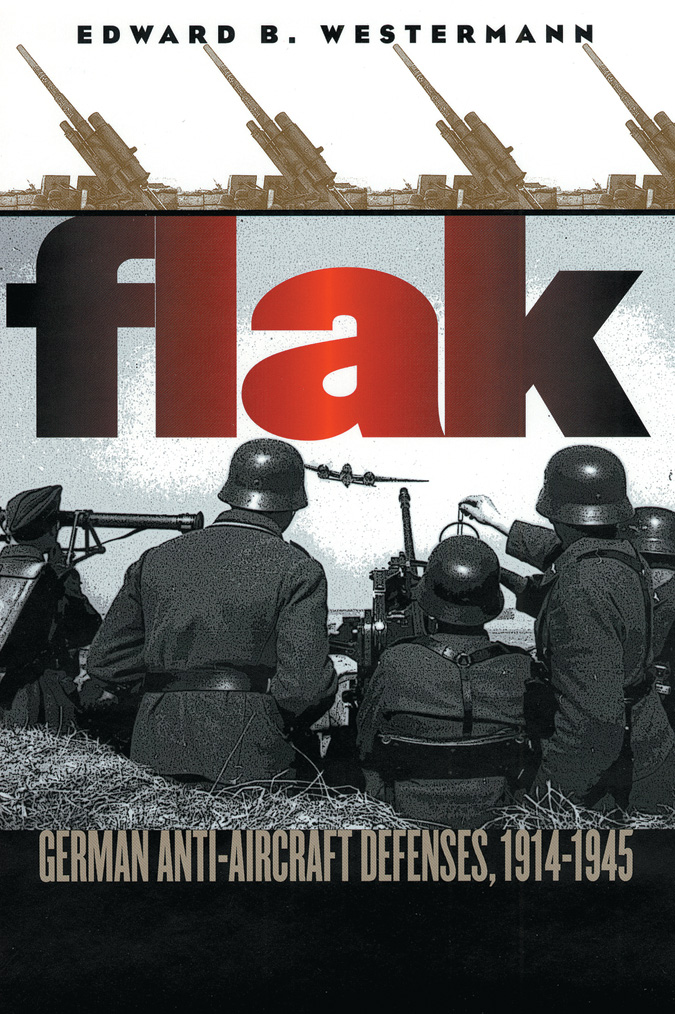 Flak: German Anti-Aircraft Defenses, 1914-1945 by Edward B. Westermann, University Press of Kansas, 2001, 394 pp., notes, tables, abbreviations, $34.95 hardcover.
Flak: German Anti-Aircraft Defenses, 1914-1945 by Edward B. Westermann, University Press of Kansas, 2001, 394 pp., notes, tables, abbreviations, $34.95 hardcover.
Germany deployed a massive air-defense system centered on fighter aircraft and antiaircraft guns, also called flak (short for Fliegerabwehrkanonen, literally “flier-defense cannon”). German air defenses were part of the Luftwaffe; at the start of the war, almost 1 million men or nearly a third of the Air Force’s strength was dedicated to air defense. By the fall of 1944, the Luftwaffe flak arm had a peak strength of more than 1.2 million men and women. By 1944, the Luftwaffe flak units had large numbers of young boys, old men, and women operating the guns, the able-bodied men having been conscripted for ground combat forces. In some areas, the manpower shortage was so critical that foreign volunteers and even POWs were used to serve the guns.
Albert Speer, head of German armaments production, wrote that Allied strategic bombing of Germany was “the greatest lost battle on the German side. The losses from the retreats in Russia or from the surrender of Stalingrad were considerably less. Moreover, the nearly 20,000 AA guns stationed in the homeland could have almost doubled the antitank defenses on the Eastern Front. In the territory of the Reich, those guns were virtually useless. Over the attacked cities they did little more than provide a kind of reassuring fireworks display for the population. By that time bombers were operating from such high altitudes that the shells of the 8.8-centimeter flak guns reached the planes at too slow a speed.”
Speer’s numbers support a British intelligence estimate of January 1944 that reported 20,625 AA guns and 6,880 searchlights in Germany and Western Europe, with another 9,569 AA guns and 960 searchlights on other fronts. The German Army and Navy also had flak components for the air defense of ground forces and naval bases, respectively, but they were comparatively small. Luftwaffe units also provided air defense to ground troops.
The most used German AA gun was the 88- mm Flak, which was used in all theaters where Germans fought. Heavier AA guns were the 105mm Flak 38 and 128mm Flak 40, the latter comprising twin barrels installed about 3 feet apart on a common mounting, the heaviest AA gun mount used in the war. The larger weapons were mounted on the ground and, in larger cities, also in Flak towers. Several thousand guns of these calibers were produced (with the 88mm Flak also being used extensively as an antitank weapon).
The Germans used a variety of lighter AA guns, of both indigenous production and captured foreign types. The larger AA guns were supported by excellent optical fire-control devices, searchlights, and radar for aircraft detection and gunfire control. Never before in German military history did the German artillery possess such variety and magnitude as in the World War II era.
Westermann’s definitive study sheds new light on every facet of the development and organization of this vital defense arm, including its artillery, radar, searchlight, barrage balloon, decoy-site, and command components. Highlighting the convergence of technology, strategy, doctrine, politics, and economics, Flak also provides revealing insights into German strategic thought, Hitler’s obsession with micro-managing the war, and the lives of the members of the flak units themselves. This is one of the finest studies of German AA guns that over time will become the benchmark study on this topic.
Robert A. Lynn
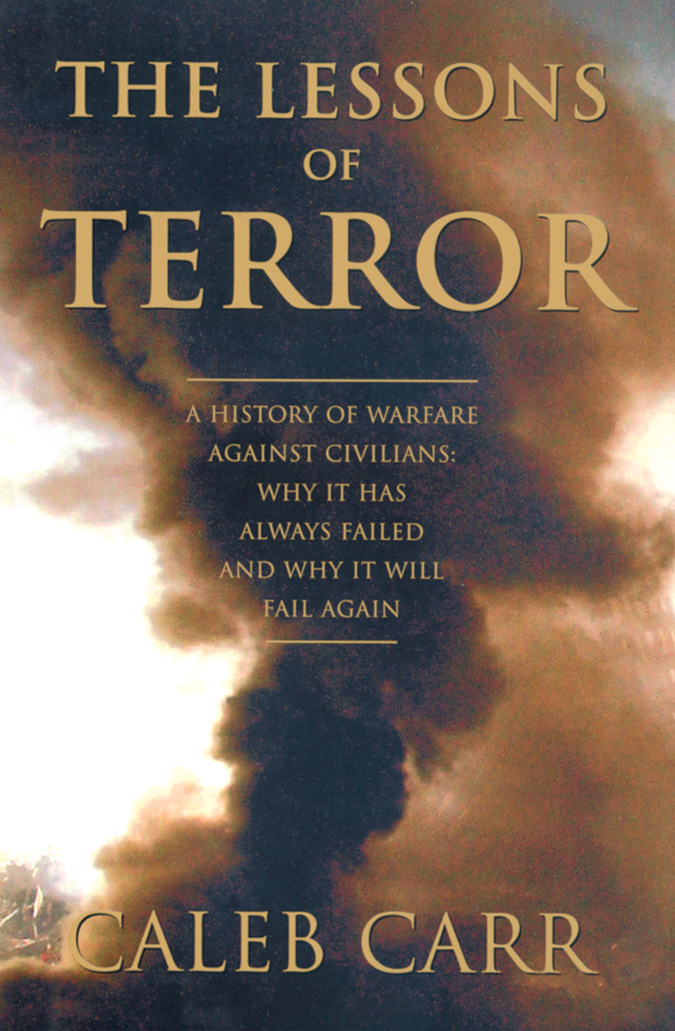 The Lessons of Terror: A History of Warfare Against Civilians, Why It Has Always Failed and Why It Will Fail Again by Caleb Carr, Random House, 2002, 244 pp., $19.95 hardcover
The Lessons of Terror: A History of Warfare Against Civilians, Why It Has Always Failed and Why It Will Fail Again by Caleb Carr, Random House, 2002, 244 pp., $19.95 hardcover
Caleb Carr is a successful writer of fiction and part-time movie script editor who has asserted in an interview that his real ambition was to be a serial murder analyst for the FBI. The FBI is not knocking on his door, however, possibly owing to Mr. Carr’s apparent total lack of qualifications to be what he wants to be. In his first book-length effort as a “military historian,” Mr. Carr demonstrates that he possesses every bit of the qualifications and insight in the field of military history that he does in the field of the psychology of serial killers. Errors of history, and simple fact, are so numerous in this book that they undermine the integrity of the author.
Because Lessons of Terror is enjoying some commercial success and Mr. Carr is receiving an inordinate amount of media attention, it may be appropriate to walk through this book in a somewhat deliberate manner.
On pages 8-9, the author describes Al Qaeda as a global terrorist organization, echoing the post-September 11, 2001 Bush Administration and media assertion that Al Qaeda is the headquarters organization for worldwide terrorism. But Yossef Bodansky, Director of the Congressional Task Force on Terrorism and Unconventional Warfare, in his authoritative Bin Laden: The Man Who Declared War on America, pointed out in 1999: “Bin Laden’s first charity, Al-Qaeda, never amounted to more than a loose umbrella framework for supporting like-minded individuals and their causes. In the aftermath of the bombings in Nairobi and Dar-es Salaam, Al-Qaeda has been portrayed in the West as a cohesive terrorist organization, but it is not.”
On page 10, the author describes Confederate General Thomas “Stonewall” Jackson as responsible, along with Union General William T. Sherman and unnamed “others … for the systemization and legitimization” of “what became known as total war.” Jackson, who died in May, 1863, wasn’t a practitioner of this style of warfare. Ironically, Carr fails to make the very legitimate connection between Sherman’s policy of total war—reviewed and approved by President Lincoln —and that taken back to Europe by European observers after 1865, and which became European war strategy during both World Wars I and II.
The author goes on to describe “the Roman Emperor Augustus, France’s King Louis XIV, Germany’s Otto von Bismarck, and the American team of Richard Nixon and Henry Kissinger” as terrorists. King Louis XIV did, of course, engage in “terrorism” as defined by the author, as did all monarchs of that time, but the author doesn’t seem to comprehend that there wasn’t the separation between “military” and “civilian” in a feudal society as exists in an industrial one. His repeated and vitriolic condemnations of Nixon and Kissinger ignore the recent contributions in serious Vietnam War scholarship and depend upon the usual anti-Vietnam War rhetoric.
Carr also provides a simplistic view of Cromwell’s New Model Army and its effectiveness in support of his own version of military history. He fails, however, to factor in the new military tactics Cromwell adopted from Sweden or the unique ideological commitment of the troops under his command. Like Cromwell, Frederick the Great is one of the author’s ideological heroes. His description of Frederick’s thinking is, however, presumptive, as is his description of British General Wolfe’s “brilliance.” Indeed, the author’s description of Wolfe’s dislike of American Indians as being based upon their presumed capriciousness and tendency to slaughter civilians ignores Wolfe’s similar dislike and distrust of American provincials.
The author’s reinterpretation of the American Revolution is particularly invigorating. In one instance he describes George Washington’s need to recruit mercenaries, “most famously Baron Friedrich von Steuben.” Ignoring the fact that most historians would consider Lafayette the most famous foreign volunteer, the author seems unaware that von Steuben was recruited by Benjamin Franklin, without Washington’s prior knowledge.
In Chapter 7, the author manages to describe the causes for the Napoleonic Wars without including French nationalism. That is equivalent to providing an explanation of the personal popularity of President Bush since initiating his War on Terror without mentioning jingoism. The author’s mention of Chechen partisans on Page 124 is self-contradictory. And decrying the change in intifada targets of the Palestinians without mentioning that those targets are now more closely modeled on those of the Israeli government’s own policy is hypocritical.
On pages 132-136, the author interprets the British burning of Washington, DC, in a manner to support his theory of terrorist warfare. Nowhere does he mention that this burning was carried out in retaliation for the American burning of York (now Toronto) in Canada. In addition, Carr interprets the War of 1812 in terms of Britain’s fear of “American democratic republicanism” without defining the term. The British may have feared such a thing, but at the time the United States would have called itself something more like a “constitutional republic” than a “democratic republic.”
Carr’s suggestion that African slavery may have been a form of terrorism in which Europeans took slaves away from their tribes (pages 136-137) requires one to ignore the simple fact that slavery was, and remains, an African institution. To suggest that the War Between the States was the ultimate effect of slavery is to ignore reality.
On page 137, Carr is again blaming the Confederate States of America for a policy that it and its generals never employed. His assertion that “they were able to focus their all-encompassing savagery on not only border towns and farms but Union POWs and former slaves who had been freed to fight against the Confederacy” is followed by no explanation, no elaboration, and no substantiation. Because it was the South that was the victim of Lincoln’s policy of total war, for which it still bears social, economic, and political scars, it would appear from the author’s writing that either it is now politically correct to openly lie about the history of the War Between the States or hate speech is now acceptable as long as you direct it to people and groups, such as Richard Nixon and Southerners, unpopular with the literati.
This interpretation is given further credence, in the author’s description of the origin and activities of the KKK. Historically, Carr has it wrong. See The Day Dixie Died: Southern Occupation 1865-66, Stackpole Books, 2002.
On page 169, the author describes “the deliberate murder of civilians, especially in Belgium” by the “political and military cliques that had surrounded the arrogant, foolish Kaiser Wilhelm II” during World War I. Those reported deaths have long since been shown to have been British and French propaganda.
The author’s diatribe against the CIA (pages 190-192) ignores the fact that the failure of the Bay of Pigs invasion in 1961 was due to President Kennedy’s removal of air support for an amphibious landing, not to a failure of the CIA. What the author describes as “darker rumors” aren’t matters of rumor, but of extensive documentation. The attempted assassination of Castro, for example, was approved by both John F. Kennedy and Robert F. Kennedy. On page 194, the author mentions that the United States was the only country to use napalm during the Vietnam War; in fact, it was also used by the Viet Cong and the North Vietnamese Army. He further uses the term “carpet bombing” and writes that the Phoenix Program was an assassination program. Both of these “myths” have since been dispelled by former VC and NVA members. They now freely concur that American forces did not indiscriminately bomb nonmilitary targets in North Vietnam and that Phoenix was more of a dangerous intelligence operation that compelled them to retreat into Cambodian sanctuaries.
On page 195, Carr submits that John F. Kennedy, Lyndon Johnson, and Richard Nixon were all terrorists. He includes Henry Kissinger in that list, but since he is unaware that a Secretary of State can’t order the acts described in the book, it would be best to delete Kissinger. We are both a little confused by his selection of acts, however. The National Guard responded to Kent State University owing to rioting and widespread destruction.
Contrary to what the author writes in Chapter 10, the IRA came into existence on Easter Day, 1916 and it was commanded by James Connolly, not Michael Collins. The author’s description of the formation of the IRA and its activities under Michael Collins is laughable; he has it all wrong. Carr’s arrogance, so pointed in matters pertaining to the former Confederacy, also raises its ugly presence in his characterization of “drunken” Irish Americans and “barroom Irish ‘patriots’ who, when sober, have no wish to be anywhere near a battlefield.” Further, the author’s interpretation of the current “troubles” in Northern Ireland doesn’t provide an adequate factual basis for forming an educated understanding of events.
Carr’s analysis of the CIA’s multiple failures and its eventual “abandonment” of the Mujahidin in Afghanistan is fanciful, if not original. In point of fact, the CIA never directly supported the Afghan resistance during the entire war. We provided funding and resources to Pakistan, which in turn supported its people in Afghanistan; there were no CIA agents in Afghan- istan. Indeed, no American official, including any CIA official, ever visited Afghanistan during the entire anti-Soviet war.
Further, the idea supported by the author that our abandonment of the Mujahidin created a disillusioned Osama bin Laden as an anti-American Islamist is unsupported by the facts. The Afghan War ended in 1989; Osama made public anti-American statements as early as 1982.
Evidence of the rush-to-print nature of this book post-911 is provided by the insert listing corrections to the text. It would have been time well spent to have this book peer-reviewed before publishing. It does not establish the author either as a serious military historian or as an unconventional warfare theorist to be taken seriously.
Professor Joseph F. Connolly II and Robert A. Lynn
Professor Joseph F. Connolly II is retired from the U.S. Army Special Forces. He is a lecturer in unconventional warfare and related matters at two European colleges. Robert A. Lynn is a public school teacher and a consultant for DAC Communications, Inc. He is a former U.S. Marine whose articles on military history have appeared in numerous publications.
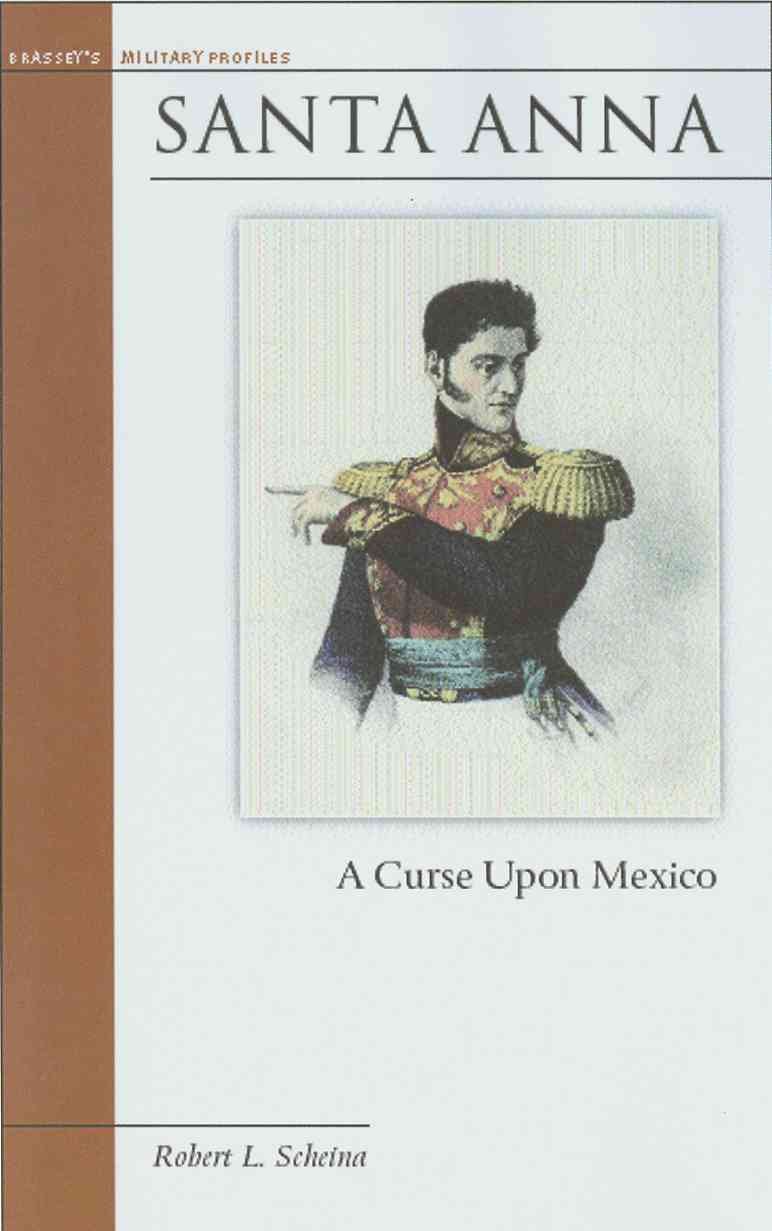 In Brief
In Brief
Santa Anna: A Curse Upon Mexico by Robert Scheina, Brassey’s, Inc., Dulles, Va., 2002, 128 pp., illustrations, maps, chronology, bibliography, index, $19.95 hardcover.
General Antonio Lopez de Santa Anna is best remembered as the villain of the Mexican War who stormed the Alamo and killed all of its defenders. What many don’t know is that Santa Anna treated the people of his own country in an equally sadistic fashion, bleeding the nation dry over the course of a 30-year dictatorship.
Santa Anna is the latest entry in Brassey’s line of short biographies that shed light on the lives of relatively unknown military figures. This volume deals not only with Santa Anna’s involvement in the war between Mexico and America, but his participation in Mexican politics. He was president no less than 11 times (during one term he even managed to overthrow himself!), succeeded in losing a great deal of Mexico to Texas, and even sold roughly 30,000 square miles of his own country, putting much of the money in his own pocket. Yet many remember Santa Anna as a national hero, responsible for the “elevation” of the nation on several occasions and the deflection of an enraged American Army that would have razed Mexico City were it not for his timely intervention via armistice.
The Mexican War is known as, among other things, the forge in which some of the American Civil War’s finest generals were fashioned. Santa Anna is an excellent reference on the man who made those commanders into the military leaders who would both tear apart and heal their own nation, and an insight into two nations, Mexico and the United States, whose fates continue to intertwine to this day.
Jim Stutz
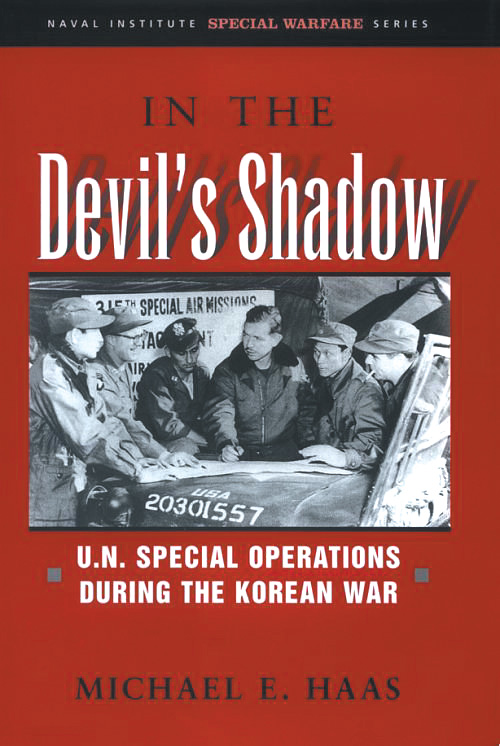 Jungle Dragoon: The Memoir of an Armored Cav Platoon Leader in Vietnam by Paul D. Walker, Presidio Press, Novato, Ca., 1999, 256 pp., photographs, maps, $24.95 hardcover.
Jungle Dragoon: The Memoir of an Armored Cav Platoon Leader in Vietnam by Paul D. Walker, Presidio Press, Novato, Ca., 1999, 256 pp., photographs, maps, $24.95 hardcover.
Lieutenant Paul Walker led a platoon of tanks and armored vehicles through the jungles of Vietnam in 1966. His tour of duty reflects the well-trained, highly motivated U.S. Army in its early involvement in Southeast Asia. The author does a good job of explaining the action, climate, and atmosphere of war fighting. His experiences explicate the strengths and weakness of armored warfare against irregulars armed with rocket-propelled grenade launchers. He also depicts well the growing bureaucracy that came with increased troop strength in Vietnam. A must-read for anyone serving in armor units.
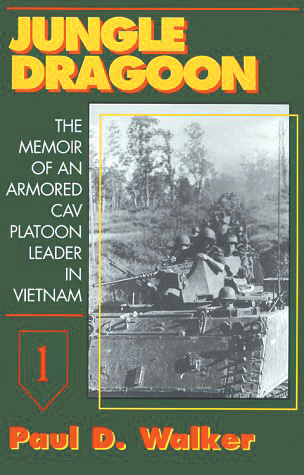 In the Devil’s Shadow: UN Special Operations during the Korean War by Michael E. Haas, Naval Institute Press, Annapolis, Md., 2000, 272 pp., line drawings; $32.95 hardcover.
In the Devil’s Shadow: UN Special Operations during the Korean War by Michael E. Haas, Naval Institute Press, Annapolis, Md., 2000, 272 pp., line drawings; $32.95 hardcover.
Spies parachuting behind enemy lines, secret missions to refute accusations of germ warfare, and beautiful Asian actresses seducing Chinese generals to discover enemy troop movements—Michael Haas tells some interesting stories about U.N. covert operations during the Korean War. The book reveals much that has never before come to light, and the missions are exciting to follow. The author also explains the political infighting to decide who would be in charge of the covert missions, the CIA or the military. In fact, the book is evenly split between missions and the politics behind the missions.
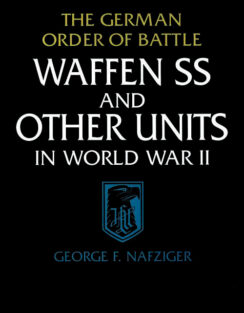 The German Order of Battle: Waffen SS and Other Units in World War II by George F. Nafziger, Combined Publishing, P.O. Box 307, Conshohocken, Pa. 19428, 2000, 320 pp., glossary, $59.95 hardcover.
The German Order of Battle: Waffen SS and Other Units in World War II by George F. Nafziger, Combined Publishing, P.O. Box 307, Conshohocken, Pa. 19428, 2000, 320 pp., glossary, $59.95 hardcover.
This is a comprehensive listing of Hitler’s National famous and infamous SS units as well as Fallschirmjaeger (paratroop) divisions, naval, Russian, and other foreign units. While all the organizational material is here, the book lacks unit histories like those found in Shelby Stanton’s Order of Battle World War II. Also, division shields would have been a nice touch. This is an important book for any author addressing the organization of Nazi Germany’s elite units.
Kevin Hymel
Note: A photograph in the Books Department of the April issue implies that the author of From Normandy to the Ruhr: With the 116th Panzer Division in World War II was Heinz Wilhelm Guderian when in fact it was his son, Heinz Gunther Guderian, then the chief of staff of the division, while his more famous father was during the time described chief of staff of the German armed forces.
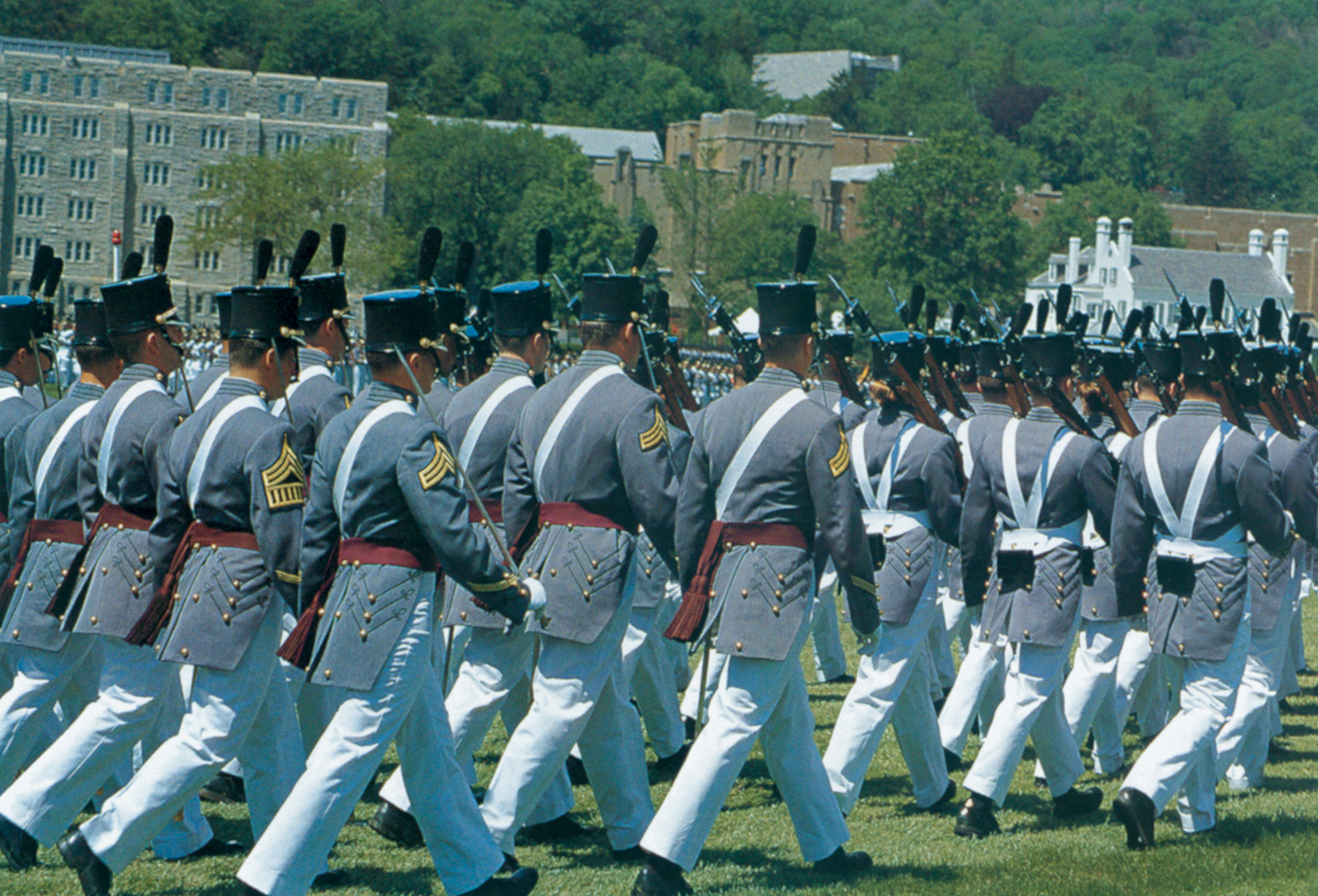
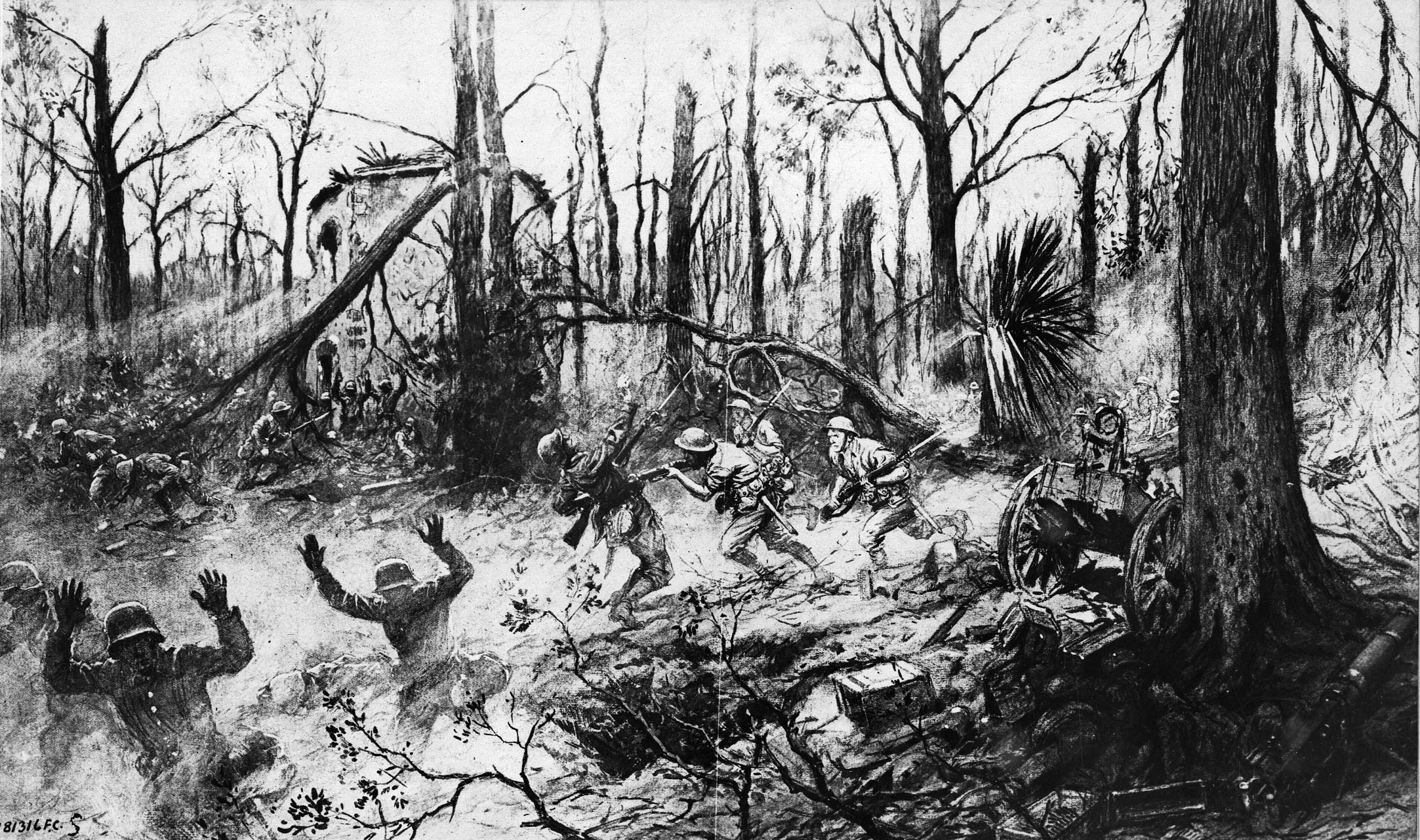
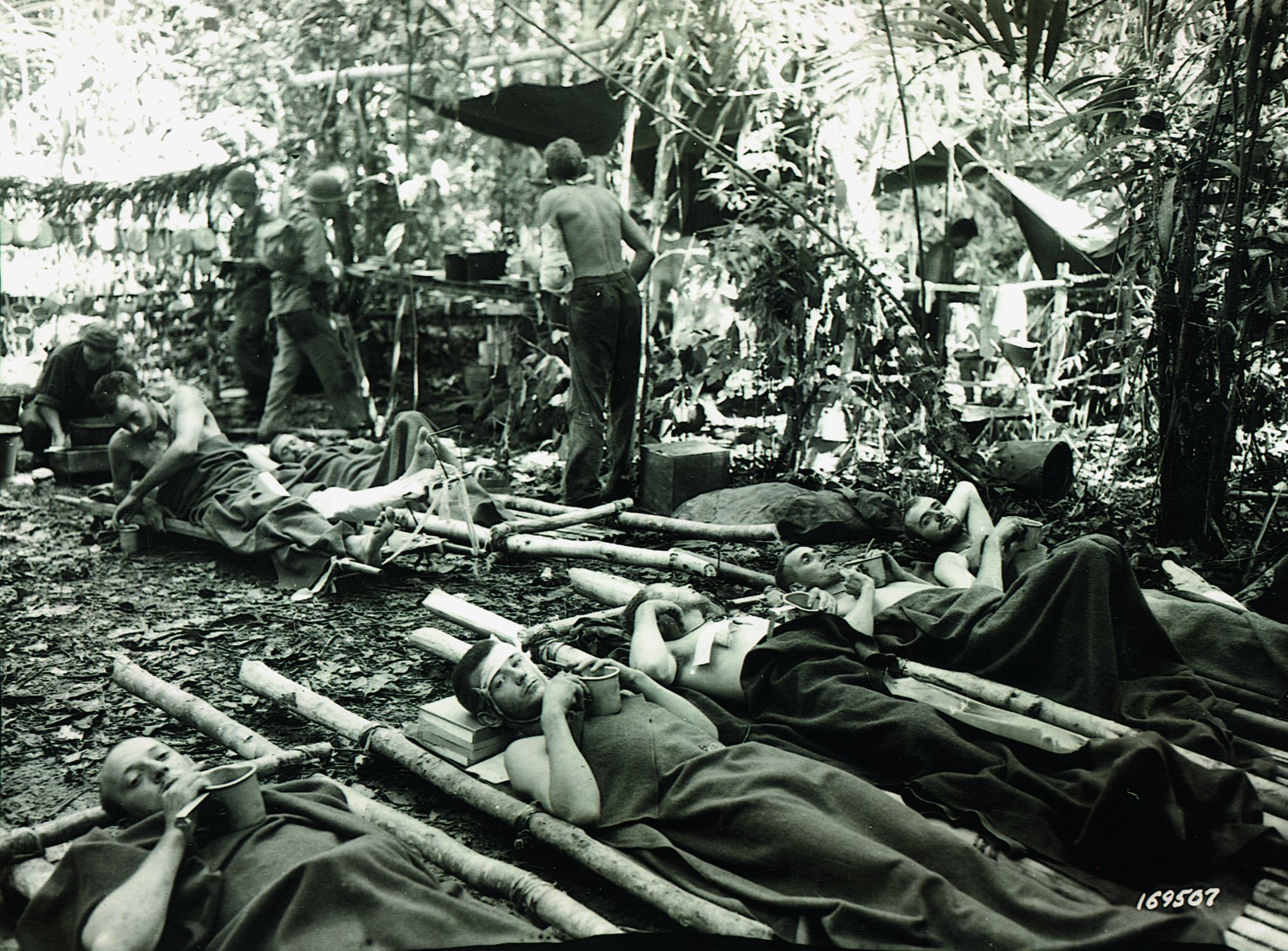
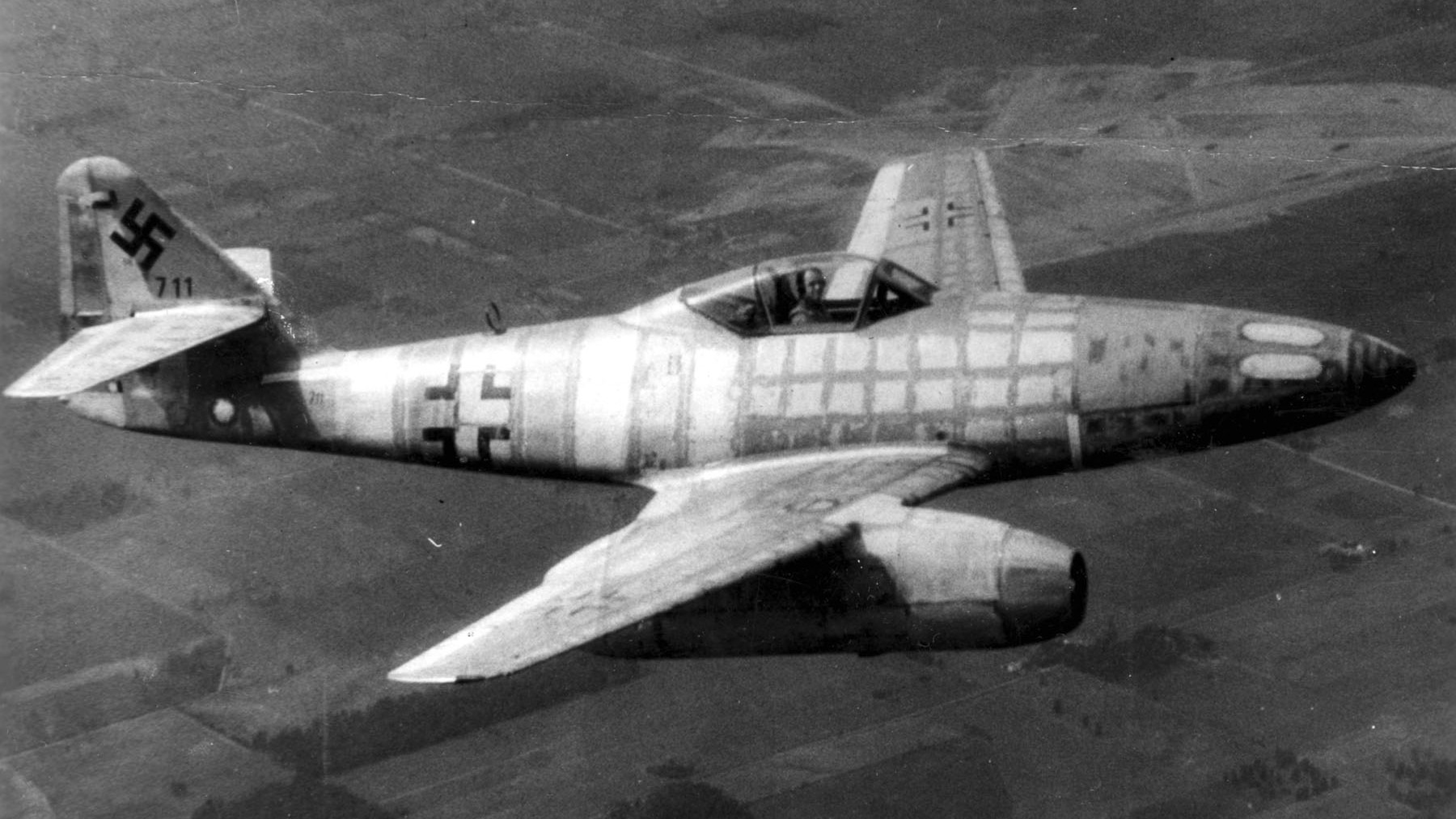
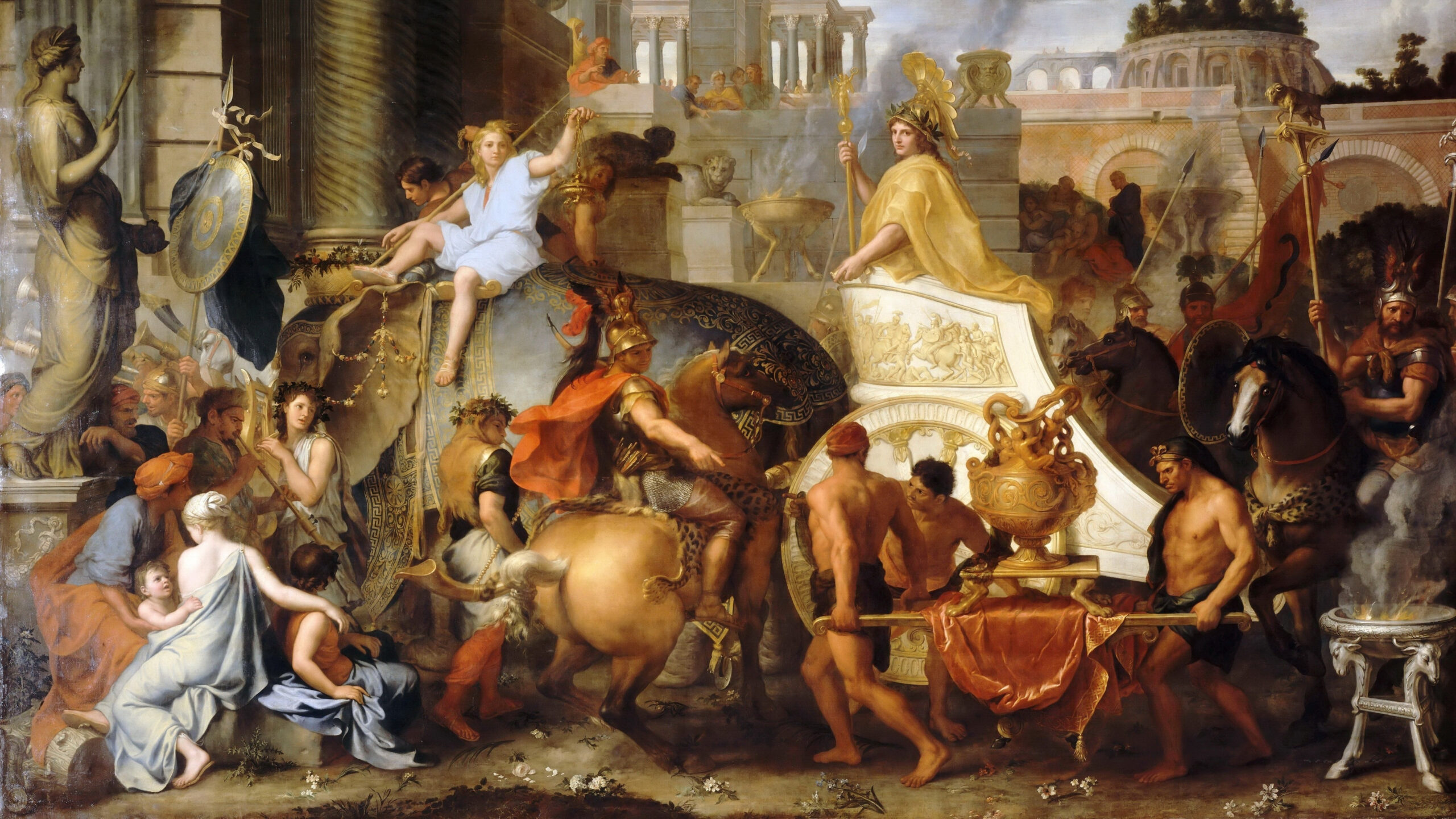
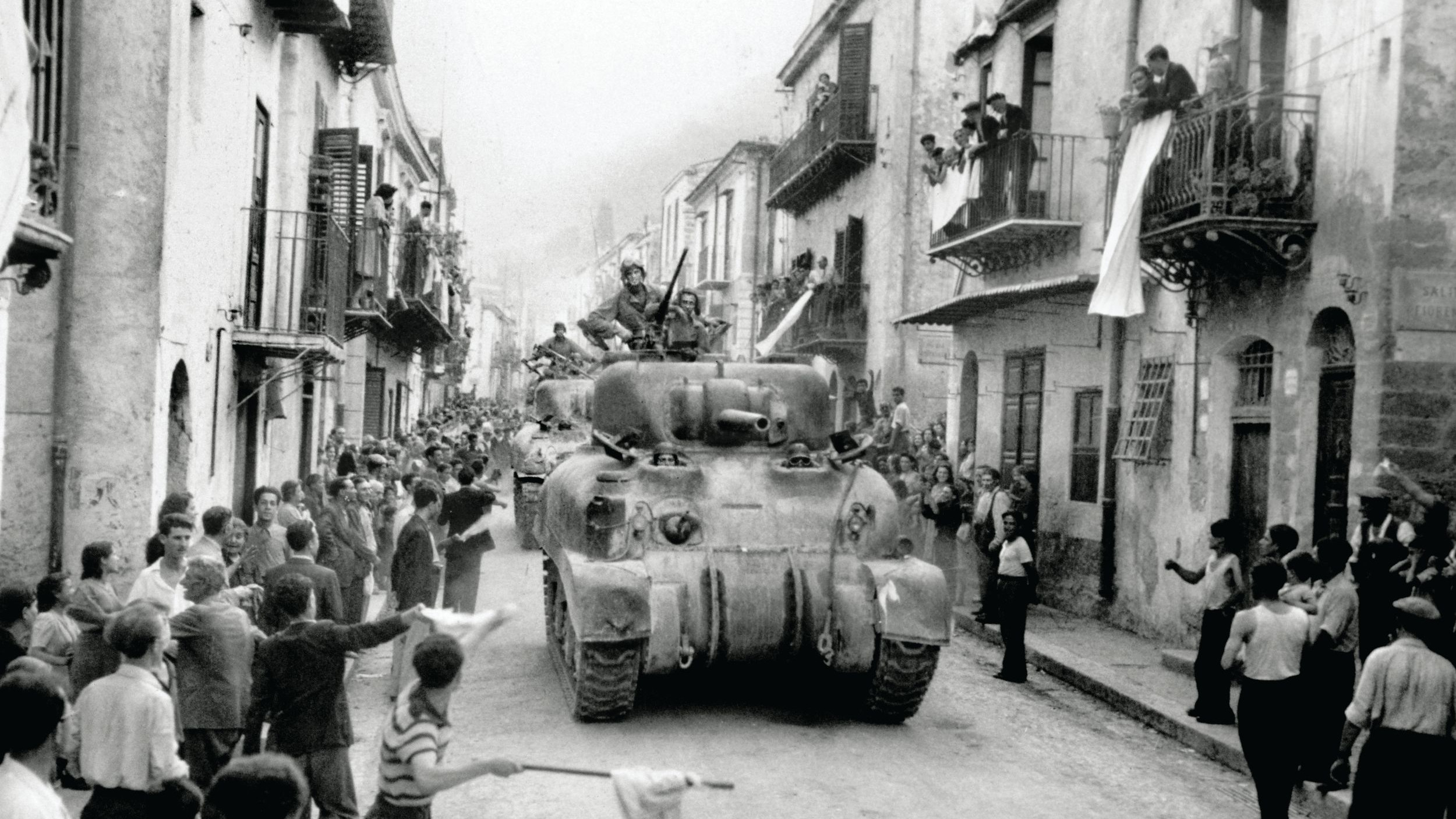
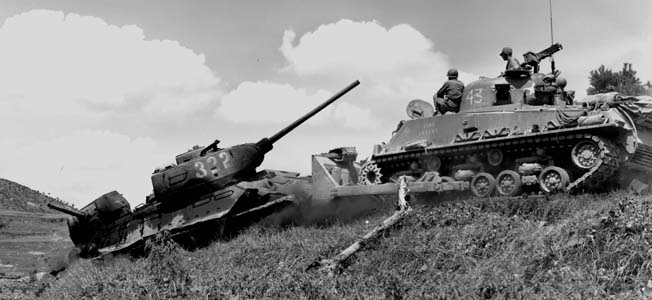
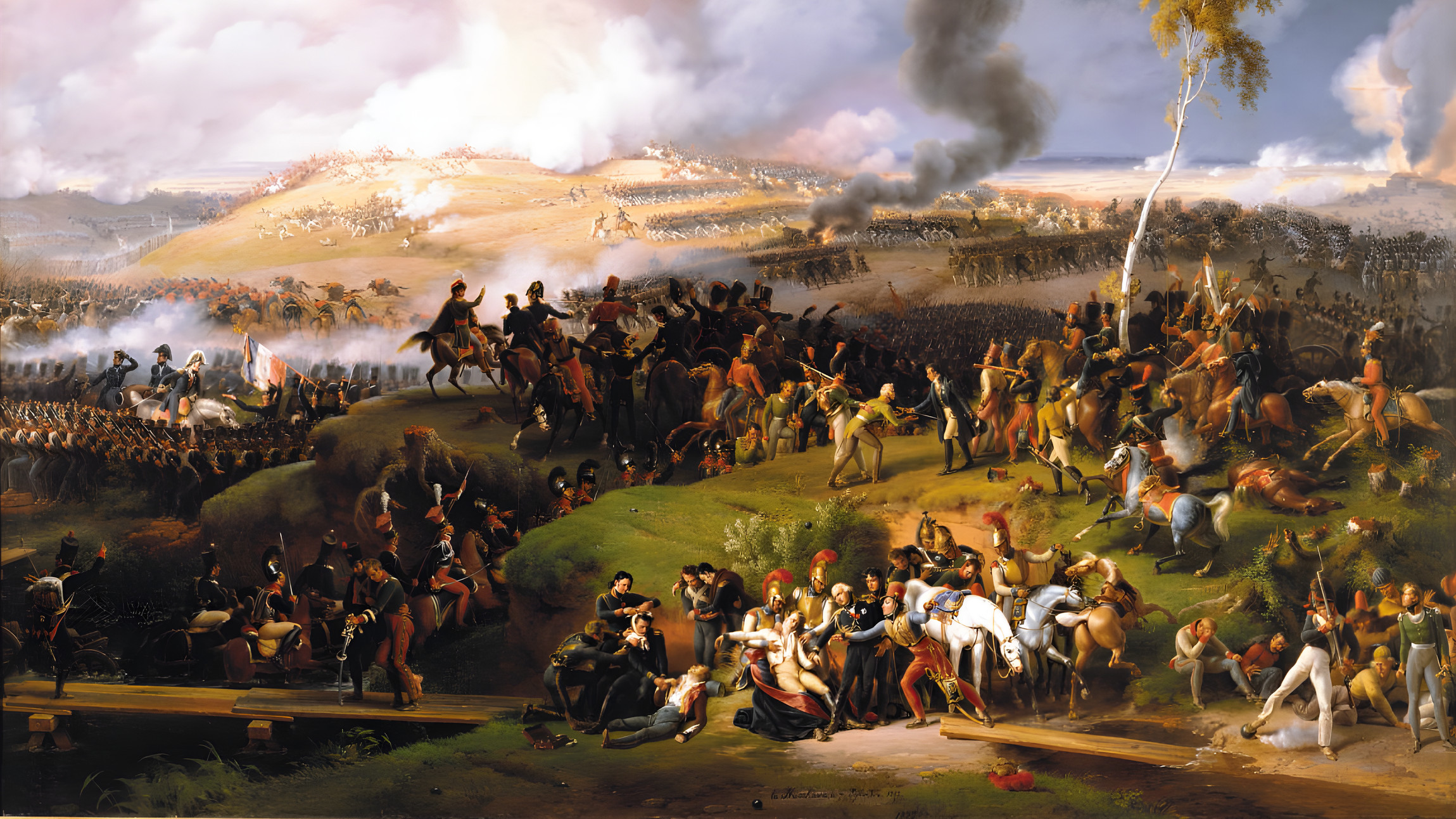

Join The Conversation
Comments
View All Comments